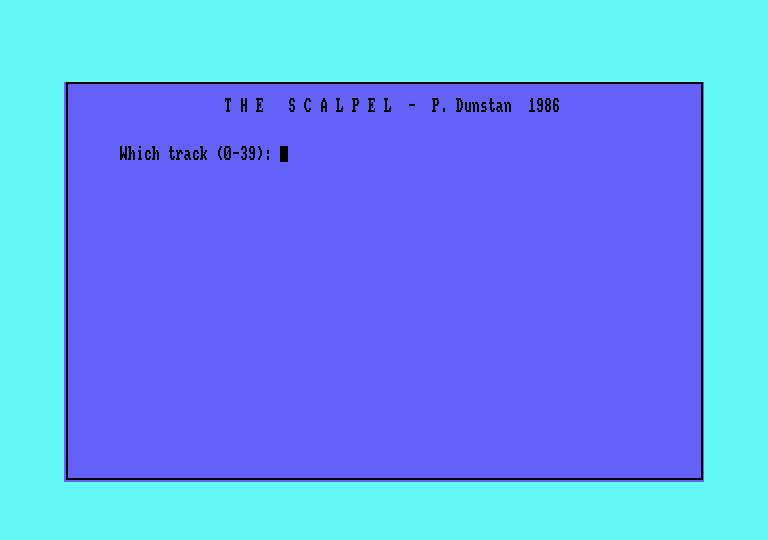The Scalpel is a powerful disc editor. It is one of the most comprehensive programs of its type. A summary of the extensive list of features is given below. - The Scalpel allows the user to EXAMINE the contents of any 512 byte sector that can be written to disc by an Amstrad computer. The information on the disc is presented in blocks of 256 bytes and these can be scanned automatically in "continuous scan" mode, or manually by use of the Shift left/right cursor keys. Code can then be EDITed in either hex or ascii mode.
- Direct access to either the DIRECTORY, a specific FILE or a particular GROUP is given by a single key entry.
- The disc can be SEARCHed for a particular ascii string (case dependent/independent) or a sequence of hex bytes. The searching feature also has a wildcard facility.
- The information on a particular track or sector can be ERASEd.
- The Scalpel allows CHECKSUMs to be performed between any two bytes anywhere on the disc.
- Any track or sector can be RELOCATEd to anywhere on the disc. Alternately, any track or sector can be SAVEd out as a binary file for further examination by another program. e.g. assembler/dissambler.
- Single tracks can be re-FORMATted with any desired sector numbers or format. With this facility, the user is given a choice whether or not to preserve the information on that track.
- The Scalpel will also perform a TRACK-BY-TRACK ANALYSIS of the disc, allowing the user to view the entire formatting details at a glance.
- Wherever possible, the Scalpel will inform the user about any damaged or BAD SECTORS and provide information about the nature of the damage.
NOTES(i) This utility is probably more suited to the advanced user as some prior knowledge of disc layouts is desirable. (ii) This utility was written so that the possibility of disc corruption is minimized. Sectors or tracks can be edited, erased or relocated without affecting the disc contents. It is only when the sector or track is purposely saved by the user that the disc is updated. 
| ★ AMSTRAD CPC ★ DOWNLOAD ★ |
|
CPCrulez[Content Management System] v8.732-desktop/c
Page créée en 637 millisecondes et consultée 1679 foisL'Amstrad CPC est une machine 8 bits à base d'un Z80 à 4MHz. Le premier de la gamme fut le CPC 464 en 1984, équipé d'un lecteur de cassettes intégré il se plaçait en concurrent du Commodore C64 beaucoup plus compliqué à utiliser et plus cher. Ce fut un réel succès et sorti cette même années le CPC 664 équipé d'un lecteur de disquettes trois pouces intégré. Sa vie fut de courte durée puisqu'en 1985 il fut remplacé par le CPC 6128 qui était plus compact, plus soigné et surtout qui avait 128Ko de RAM au lieu de 64Ko. |
|
|
